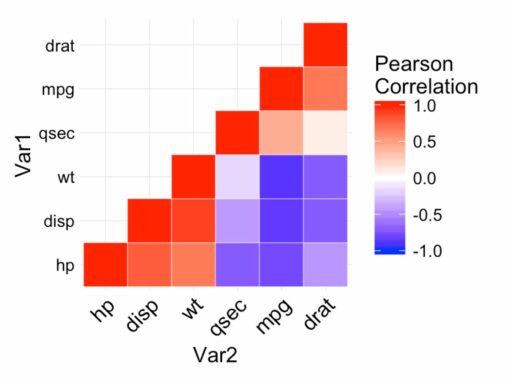Table of Contents
In the rapidly evolving landscape of data management, the design of data-intensive applications stands as a critical factor in achieving system scalability and robustness. This article delves into the architectural foundations and strategies necessary for building scalable data systems, ensuring robust data handling in distributed environments, optimizing real-time analytics, advancing data deduplication techniques, and future-proofing database architecture. It’s an exploration of the technological advancements and best practices that can unlock the full potential of large-scale data processing, offering insights into how to maintain efficient, reliable, and high-performing systems in the face of ever-growing data challenges.
Key Takeaways
- Scalable data systems rely on parallel processing, efficient data loading patterns, and the strategic use of columnar storage and time-partitioned data to handle massive datasets and optimize query performance.
- Robust data environments are achieved through fault tolerance, high availability, deep storage solutions for data recovery, and the decoupling of storage and processing to ensure consistent data access and system resilience.
- Real-time analytics are optimized through streamlined event data processing, adaptable query workload handling, and error-free ELT code, enabling immediate insights and low-latency responses to data streams.
- Data deduplication advances with effective big data management, continuous data optimization strategies, and adherence to security and compliance standards during data transformation processes.
- Future database architectures will embrace new technologies and address emerging challenges with innovative functionality, ensuring scalability and performance are mastered to meet the demands of the digital era.
Architectural Foundations for Scalable Data Systems

Parallel Processing at Scale
Leveraging parallel processing architectures is essential for distributing computational tasks across multiple processing units, enhancing the performance of data-intensive applications. By scaling out to larger clusters and adding more nodes, systems like Spark can manage massive datasets efficiently. The scheduler plays a crucial role in distributing tasks to worker nodes, ensuring balanced workload and optimal resource utilization.
When segmenting data for parallel processing, it’s important to consider both the amount of data and the segmentation flexibility. For row-wise data, segmentation can be based on the number of rows, allowing for parallel processing even with small datasets. Column-wise data, however, requires block division and is most effective when dealing with hundreds of millions of rows. The double increment segmentation strategy can be employed to maintain a consistent number of data blocks while allowing the segment size to grow with the data amount.
Ensuring that each thread receives an equal processing load and that the system can handle flexible segmentation is vital for maximizing parallel processing efficiency.
In the context of data-intensive workloads, it’s also crucial to process data at a granular level, optimizing it for subsequent logical data processing steps. This includes considering security boundaries, retention rules, user access policies, required latency, and the business impact level.
Data Loading Patterns and Efficiency
Efficient data loading is critical for the performance of data-intensive applications. Batch processing has been the traditional approach, but the rise of real-time analytics demands more agile and continuous data loading methods. Change Data Capture (CDC) and incremental loading are becoming increasingly important to ensure that data systems can react quickly to new information.
- Batch Loading: Scheduled, often during off-peak hours, to minimize impact on system performance.
- Real-Time Streaming: Continuous ingestion of data as it is generated, enabling immediate analysis.
- Incremental Loading: Only new or changed data is loaded, reducing the volume of data transfer and processing time.
Efficient data loading not only improves system performance but also enables more timely insights, which can be a competitive advantage in today’s fast-paced business environment.
Adapting to these patterns requires a careful balance between system resources and the timeliness of data availability. It’s essential to evaluate the trade-offs between immediate data access and the cost implications of maintaining a system capable of real-time processing. As data volumes continue to grow, the efficiency of data loading patterns will remain a pivotal factor in the scalability and robustness of data-intensive systems.
Columnar Storage and Time-Partitioned Data
Columnar storage has become a cornerstone in the realm of data-intensive applications, particularly for analytics. The basic principle of columnar storage is to minimize the amount of data retrieved from storage, focusing only on the columns that are actually needed for computation. This approach contrasts with traditional row-oriented storage, where the entire row of data must be fetched, even if only a few columns are required.
Time-partitioned data complements columnar storage by organizing data into segments based on time intervals. This method enhances query performance, especially for time-series data, by allowing efficient access to relevant slices of data. When combined, columnar storage and time-partitioning provide a powerful duo for handling large-scale, read-heavy workloads.
However, it’s important to recognize the limitations of columnar storage. One such limitation is the indexing performance, which can be less efficient compared to row-wise storage. Despite this, the benefits for analytic queries often outweigh the drawbacks, making columnar storage a popular choice for modern data systems.
Best practices in data management suggest that an optimized storage solution is essential for querying extensive databases. Columnar compression and time-partitioned data are key to achieving efficient storage and access.
Ensuring Data Robustness in Distributed Environments

Fault Tolerance and High Availability
In the realm of data-intensive applications, fault tolerance and high availability are critical components that ensure continuous operation and data integrity. Architectures that distribute data and query load across multiple servers enhance the system’s resilience and uptime.
For instance, the use of columnar storage and time-partitioned data contributes to a robust architecture that supports high availability. These systems often feature advanced mechanisms such as time-based sharding, partitioning, and data compression, which are essential for maintaining versioned, materialized views.
The integration with deep storage solutions like Amazon S3 or Hadoop Distributed File System (HDFS) further fortifies fault tolerance. Data is organized into segments, making retrieval and querying efficient, while also ensuring data recovery in the event of system failures.
Scalability is another key aspect, allowing deep storage to expand independently of compute resources. This decoupling of storage and processing is a cornerstone of modern data systems, providing the flexibility to handle growing data volumes without compromising performance.
Deep Storage and Data Recovery
In the realm of data-intensive applications, deep storage solutions are paramount for ensuring long-term data retention and system resilience. These solutions, such as Amazon S3, Google Cloud Storage, Hadoop Distributed File System (HDFS), and Microsoft Azure Storage, provide a scalable and durable environment for data backup and archival.
Deep storage systems are designed to be inherently fault-tolerant, capable of recovering and reloading data segments in the event of a system failure. This feature is critical for maintaining uninterrupted data access and preventing data loss.
The segmentation of data within deep storage is a key aspect that enhances efficiency. Data is organized into partitioned, compressed, and indexed files, which streamlines the retrieval and querying process. Below is a summary of the core attributes of deep storage that contribute to its robustness and scalability:
- Data Segmentation: Efficient organization and retrieval of data.
- Fault Tolerance and Recovery: Resilience against system failures.
- Scalability: Independent scaling from compute resources.
- Decoupling of Storage and Processing: Flexible resource management.
By leveraging these attributes, deep storage systems play a crucial role in the architecture of data-intensive applications, supporting a wide range of storage systems and ensuring data persistence beyond the lifetime of individual processes.
Decoupling of Storage and Processing
The decoupling of storage and processing is a pivotal design principle in modern data-intensive applications. By separating the physical storage of data from the computational resources used to process it, systems gain significant flexibility and scalability. This separation allows for independent scaling of storage and compute resources, which can lead to more cost-effective and efficient use of infrastructure.
In practice, decoupling enables organizations to optimize their resource allocation based on current demands. For instance, during periods of heavy data processing, additional compute resources can be provisioned without the need to scale storage concurrently. Conversely, as data volumes grow, storage can be expanded without impacting the performance of the processing cluster.
The strategic separation of concerns not only simplifies system management but also enhances fault tolerance. By isolating storage from processing, the risk of a single point of failure is reduced, and system resilience is improved.
Here are some benefits of decoupling storage and processing:
- Flexibility: Adjust compute and storage resources independently.
- Cost-effectiveness: Optimize expenses by scaling resources on-demand.
- Performance: Avoid bottlenecks by provisioning resources tailored to specific workloads.
- Resilience: Enhance system robustness with isolated failure domains.
Optimizing Real-Time Analytics for Large-Scale Data

Streamlining Event Data Processing
In the realm of real-time data processing, handling and analyzing data as it is generated is crucial for maintaining a competitive edge. This process contrasts sharply with batch processing, which deals with data collection and analysis in discrete intervals. Real-time processing is indispensable for applications that require immediate insights, such as clickstream analytics, network monitoring, and fraud detection.
To streamline event data processing, a typical pipeline includes several stages:
- Data Ingestion: Capturing event data as it’s produced.
- Data Enrichment: Enhancing data with additional context.
- Data Storage: Temporarily storing data for processing.
- Processing: Extracting meaningful insights in real-time.
- Analysis: Detecting patterns and anomalies using CEP frameworks.
- Visualization: Presenting data insights interactively.
Scalability and low latency are the linchpins of effective real-time data processing. Systems like Apache Kafka and Apache Flink are architected to handle high-capacity data ingestion and rapid query execution across distributed systems.
The goal is to enable quick and flexible data aggregations, which are essential for summarizing and analyzing large datasets. This facilitates quick data slicing, dicing, and aggregation queries, all while ensuring robust fault tolerance and high availability.
Adapting to Varying Query Workloads
In the realm of real-time analytics, an efficient and adaptable system is crucial for managing large volumes of data and varying query workloads. This ensures not only fast data processing but also resource efficiency.
To effectively handle complex queries, systems must be dynamic. AI algorithms, by analyzing workload patterns and system resources in real time, can adjust query execution plans on the fly. This proactive approach optimizes performance amidst fluctuating workloads and evolving data structures.
Predictive maintenance, powered by AI, revolutionizes database health management. By using historical data and predictive analytics, systems can anticipate issues and automate optimizations.
For high-concurrency query requirements, it’s important to balance columnar storage for traversal with row-wise storage for search. In some cases, maintaining two redundant copies of data may be necessary to meet performance demands for both traversal and search.
Here are some strategies to manage query workloads effectively:
- Query Lanes and Prioritization: Categorize and prioritize queries to ensure critical tasks are addressed promptly.
- Caching Strategies: Implement broker caching, historical node caching, and query-level caching to speed up repeated queries and improve overall performance.
- Approximation Algorithms: Utilize algorithms to provide faster, albeit approximate, results when exact precision is not critical.
Previewing Code for Error-Free ELT
Ensuring error-free ELT (Extract, Load, Transform) processes is crucial for maintaining data integrity and efficiency. Previewing code during design time is a key feature that allows developers to validate transformations before full-scale execution. This preemptive step can significantly reduce the risk of data corruption and processing errors.
Preview capabilities are not just about catching errors; they also provide insights into how data will flow through the system. For instance, you can:
- Verify data quality and consistency
- Assess transformation logic correctness
- Estimate the performance impact of code changes
By integrating preview features into the ELT workflow, teams can foster a more proactive approach to data management, ensuring that each transformation is precise and aligned with business requirements.
Moreover, the ability to switch easily between ETL and ELT modes offers flexibility to adapt to varying data processing needs. This adaptability is essential for businesses that must respond quickly to changing data landscapes or performance optimization demands.
Advanced Techniques in Data Deduplication

Effective Big Data Management
In the realm of big data management, the goal is to harness the vast volumes of data to drive business insights and decisions. The evolution from traditional database systems to data lakes, and now to data lakehouses, reflects the growing need for more sophisticated data handling techniques. Data lakehouses combine the best of both worlds, offering the structured query capabilities of data warehouses with the scale and flexibility of data lakes.
- Traditional Databases: Optimized for structured data, ideal for BI and reporting.
- Data Lakes: Handle large volumes of structured and unstructured data, store data in native format.
- Data Lakehouses: Merge capabilities of databases and lakes, support advanced analytics.
By enabling real-time processing and analysis, organizations can unlock the full potential of big data, leading to more informed and timely decisions. The challenge lies in managing these diverse data sets efficiently to maintain data consistency and quality, which are paramount for accurate analytics.
Strategies for Continuous Data Optimization
In the realm of data optimization, continuous improvement is key. Adapting transformation rules to the evolving needs of your business is essential for maintaining economic viability. As data volumes swell and the pace of generation accelerates, understanding consumption patterns becomes critical to avoid costly, uninformed processing.
A strategic approach involves scaling the number of transformations (N) with the data volume, ensuring a consistent block size across the data warehouse. This facilitates the implementation of columnar storage and enables efficient parallel computation on manageable data segments.
Embracing predictive maintenance and autonomous databases can significantly reduce operational overhead. These systems autonomously optimize configurations and address security vulnerabilities, allowing organizations to concentrate on strategic growth rather than routine maintenance.
The Medallion architecture exemplifies optimized data processing, with each layer serving distinct purposes and transformations tailored to security, retention, and access requirements. Change data capture (CDC) and schema drift handling are pivotal in maintaining data integrity during transfers to a data lakehouse.
Security and Compliance in Data Transformation
In the realm of data transformation, security and compliance cannot be afterthoughts. As organizations navigate the complexities of ELT (Extract, Load, Transform) processes, the integration of data lineage and governance frameworks becomes crucial. These frameworks ensure traceability and consistency, which are vital for auditing and adhering to compliance standards.
- Data Lineage: Tracks the origins and transformations of data, providing a clear audit trail.
- Data Governance: Enforces policies on data usage, access, and quality, ensuring that data transformations comply with regulatory requirements.
By embedding security and compliance checks into the transformation process, businesses can preemptively address potential issues, maintaining the integrity and confidentiality of their data.
Furthermore, the ability to preview transformation code before execution is a significant step towards error-free ELT. This practice not only helps in catching errors early but also aligns transformations with the specific needs of the business, considering factors like user access policies and business impact levels. The table below summarizes key aspects of a secure and compliant data transformation process:
| Aspect | Description |
|---|---|
| Preview Code | Allows for error detection before running ELT code. |
| Advanced Transformation | Supports complex transformations within the ELT tool. |
| Data Quality | Identifies and addresses data quality issues early. |
| Integration | Seamlessly combines with data lineage and governance for compliance. |
Adapting to the evolving landscape of data integration requires a flexible approach that balances the need for robust security measures with the agility to meet changing business demands.
Future-Proofing Database Architecture

Embracing New Technologies and Challenges
As the digital landscape evolves, database architectures must adapt to new technologies and the challenges they bring. The integration of big data, artificial intelligence (AI), and cloud computing has become a cornerstone for modern systems, demanding a reevaluation of traditional database designs.
- Edge Computing: A shift towards decentralized data processing to support IoT devices.
- AI and Automation: Enhancing database functionality with intelligent, automated solutions.
- Cloud Integration: Leveraging cloud services for scalability and innovation.
Embracing these technologies not only drives innovation but also ensures that database systems remain efficient and relevant in the face of rapidly changing demands.
The future of database architecture lies in its ability to be agile, to integrate seamlessly with emerging technologies like Azure Data Factory, and to address the complexities of scaling in the digital era. It’s about building systems that are not just robust and scalable, but also intelligent and responsive to the needs of the enterprise.
Innovative Approaches to Database Functionality
The relentless march of technological progress has led to a transformative era in database functionality, where innovation is not just a buzzword but a necessity. The integration of AI into database management, for instance, is not just about automating routine tasks; it’s about enhancing the database’s ability to learn and adapt. This approach mimics human problem-solving but is enhanced by the LLM’s ability to process and analyze vast amounts of information quickly.
The convergence of AI technologies with database systems is setting the stage for autonomous databases that can perform intelligent query optimization and predictive maintenance without human intervention.
As we look towards the future, several trends and challenges emerge that will shape the trajectory of database architectures:
- Edge Computing: The rise of IoT devices demands distributed databases that can process data efficiently at the edge.
- NoSQL and Cloud: The shift from traditional RDBMS to NoSQL databases and cloud-based architectures addresses the scalability and flexibility required by modern applications.
- AI Integration: AI’s role in database management is expanding, leading to more intelligent and automated solutions.
Understanding these dynamics is crucial for anyone involved in the design and implementation of next-generation database systems.
Mastering Scalability and Performance
Achieving scalability and performance in data-intensive applications is a complex endeavor that requires a multifaceted approach. Efficient data replication and partitioning are fundamental to scaling databases without compromising on performance. Sharding, for instance, distributes data across multiple machines, reducing the load on any single server and enhancing query response times.
To master these aspects, one must understand the intricacies of distributed transactions and how they maintain consistency across a distributed database. The Overlord’s role in task management is pivotal, ensuring that data ingestion tasks are efficiently assigned and executed, thus contributing to the system’s scalability and fault tolerance.
In the realm of performance optimization, tools like Grafana play a crucial role. They provide real-time monitoring and proactive alerts, which are essential for maintaining the health of IoT and cloud applications. As we look to the future, embracing new technologies and addressing emerging challenges will be key to sustaining and enhancing database functionality.
Conclusion
In the journey of designing data-intensive applications, we have explored the multifaceted strategies that enable systems to achieve unprecedented scalability and robustness. From leveraging parallel processing and columnar storage to embracing real-time analytics and fault tolerance, the architectural choices we make are pivotal in handling the ever-growing volumes of data. Deduplication, intelligent data management, and the integration of technologies like Kafka and ClickHouse have emerged as key enablers for efficient data processing. As we look to the future, continuous learning and adaptation to emerging technologies will remain essential. The insights from industry experts and the application of best practices in system design will guide us in unlocking the full potential of our data architectures, ensuring that they are not only scalable and robust but also intelligent and adaptable to the evolving landscape of data-intensive computing.
Frequently Asked Questions
What is parallel processing at scale and why is it important for data-intensive applications?
Parallel processing at scale involves running ELT code on multiple machines simultaneously, improving the performance of data jobs. It allows systems like Spark to handle massive datasets by scaling out to larger clusters and adding more nodes, which balances workload and maximizes resource utilization.
How do data loading patterns affect system efficiency?
Data loading patterns must support more than just batch loads; they should also enable efficient real-time analytics by quickly processing varying query workloads and handling large volumes of data without significant resource overhead.
What are the benefits of columnar storage and time-partitioned data in database systems?
Columnar storage enhances performance for analytic queries by storing data by columns rather than rows. Time-partitioned data helps in managing and querying large datasets by dividing them into manageable chunks based on time, which improves query performance and data management.
Why is fault tolerance and high availability crucial in distributed environments?
Fault tolerance and high availability ensure that data-intensive applications remain operational even in the event of system failures. They distribute data and query loads across multiple servers, reducing the risk of downtime and data loss.
How does deduplication contribute to effective Big Data management?
Deduplication is the process of eliminating duplicate copies of data, which optimizes storage utilization and improves data management. It’s crucial for handling Big Data effectively, as it reduces storage needs and enhances data processing efficiency.
What strategies can future-proof database architecture?
Future-proofing database architecture involves embracing new technologies, addressing emerging challenges, and implementing innovative approaches to database functionality. This includes scalable solutions that can adapt to growing data volumes and complex analytics requirements.





